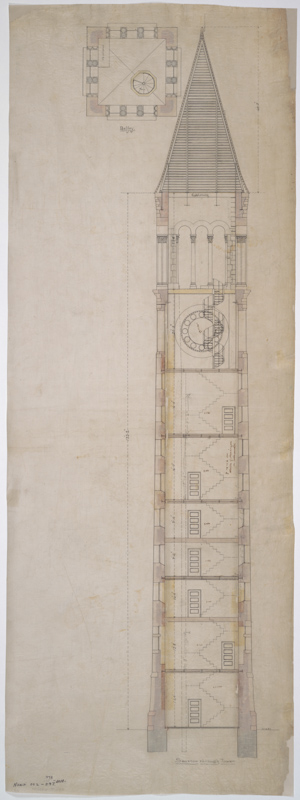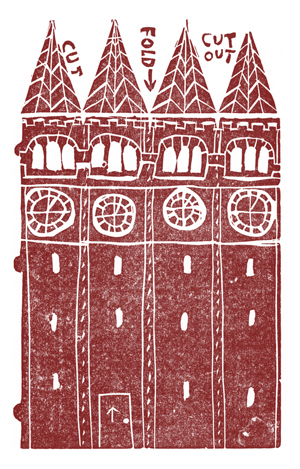Introduction
University Library. North, South, East, West, and tower elevations. William Henry Miller, 1889.
Cornell’s story begins in 1862, when President Abraham Lincoln signed the Morrill Land-Grant College Act. On February 7, 1865, Andrew Dickson White introduced in the New York State Senate a bill to establish Cornell University as New York’s land-grant institution: for “the cultivation of the arts and sciences and of literature, and the instruction in agriculture, the mechanic arts and military tactics, and in all knowledge.”
On April 27, 1865, New York State Governor Reuben E. Fenton, in his chambers in the old State Capitol in Albany, signed the bill that constitutes the Charter of Cornell University.
The Charter immediately established Cornell University as explicitly non-sectarian and coeducational, welcoming anyone who was academically qualified, regardless of sex, color, creed, or national origins. Ezra Cornell and Andrew Dickson White also considered it essential that Cornell University integrate all studies. Agriculture and the mechanic arts were to be regarded as the peers of any other subject, and from its inception, the Cornell curriculum was unique in its diversity. Cornell’s motto,“I would found an institution where any person can find instruction in any study,” reflected the Charter and has continued to inspire Cornell’s distinctive evolution.
This exhibit, part of Cornell's celebration of the Sesquicentennial of its founding, provides a lively tour through Cornell's inspiring history through original documents, letters, photographs, postcards, maps, and artifacts. It documents the founding ideals, along with Cornell’s connections to the U.S. and the world – its response to two world wars, its international programs, student engagement with social and political problems; the Library, as White described, “the culmination of all”; and the many symbols and traditions that “say Cornell.”


